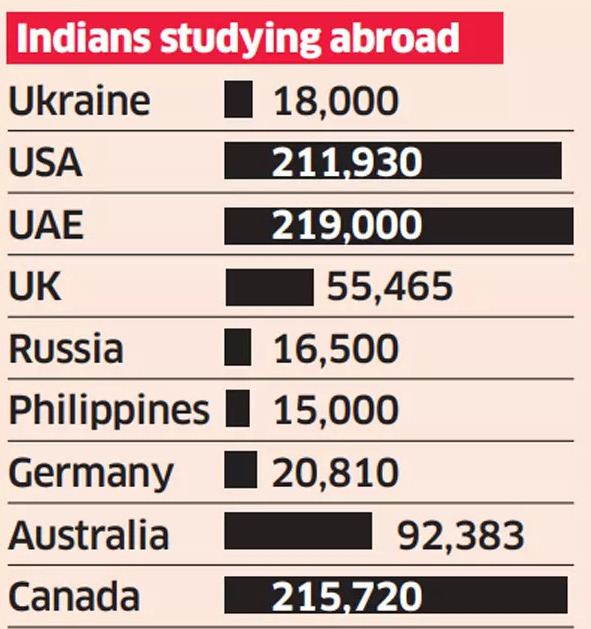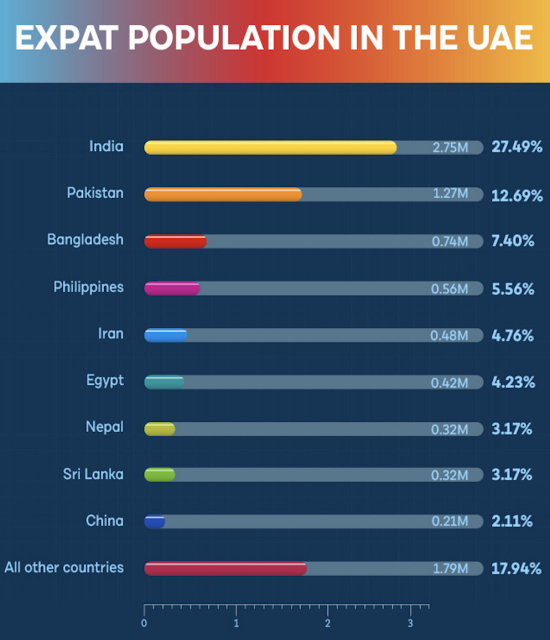PakAlumni Worldwide: The Global Social Network
The Global Social Network
Islamophobia: Can Modi's India Afford to Alienate the Entire Arab Muslim Middle East?
Last week, two official spokespersons of India's ruling BJP party insulted Prophet Muhammad (PBUH) on an Indian television channel known for promoting Islamophobia. Mohammad Zubair, an Indian Muslim journalist, tweeted a video clip of the TimesNow primetime show featuring BJP's official spokeswoman Nupur Sharma attacking the Prophet (SAW) revered by more than a billion Muslims around the world. As the video clip went viral, a long a growing list of Muslim countries has officially protested to the Indian government. The UAE, Oman, Indonesia, Malaysia, Iraq, the Maldives, Jordan, Libya, Bahrain and Pakistan have now joined Kuwait, Iran and Qatar, calling Indian ambassadors to register their protest, and Saudi Arabia has issued a strongly worded statement. "The Ministry of Foreign Affairs expressed its condemnation and denunciation of the statements made by the spokeswoman of the BJP," the Saudi statement said.
 |
| India's Ties to the GCC Nations. Source: Advaid The BJP's entire domestic politics is built on the hatred of Islam and Muslims. At the same time, Prime Minister Narendra Modi who many hold primarily responsible for promoting Islamophobia in India, wants to have strong economic ties with the Arab Muslim Gulf states. This latest crisis has exposed the built-in contradictions in the BJP's domestic and international agenda. Indian analyst Aakar Patel calls the ruling BJP party "a party of bigots". Here is his analysis of the situation:
"The (Modi) government has not bulldozed properties of Muslims for resisting rioting; it has conducted civic acts related to unauthorized construction. India is not targeting its Muslims through CAA-NRC pincer; it is only showing solidarity with non-Muslims from neighboring nations. Allowing mobs to prevent congregational prayers in designated spaces is really to ensure traffic flows smoothly. There can not be many who are innocent of what is going on. Certainly, there are none among the votaries of Hindutva. The problem is having democratized violence against Muslims across the country, and having been electorally rewarded for this, Modi must consider what it means for India. He has been given a taste of that this week, and as the sequence of events shows, he has not found it appealing. Trouble on this front will return unless Hindutva retreats and returns India to its normative secular state its Constitution prescribes. This is not going to happen under Modi, of course. The next best thing is to backpedal Hindutva a bit and calibrate Hindutva to a level where it pleases its constituency but doesn't offend the world. This will not be easy as we are about to find out".
It is important to note that nearly 9 million Indians work in the Arab Gulf nations, 60% India's crude oil comes from the Middle East and the UAE is India'a third largest trading partner. Half of all remittances to India ( nearly $40 billion) come from just 5 Gulf nations of the GCC.
The Hindu Nationalists led by Prime Minister Modi are particularly hostile toward Muslims but also other Abrahamic faiths and the West. American journalist Walter Russell Mead described it in a recent Wall Street Journal Op Ed as follows: "Many BJP supporters want the Indian government to defend India’s Hindu civilization and culture from Islam, Christianity and Western secular liberalism. This form of Hindu nationalism leads to controversial policy initiatives". The fact that the United Arab Emirates has joined to protest is particularly significant. The Arab Muslim UAE, a grouping of seven Arab Muslim kingdoms, has now become the number one destination for education and employment of people from Hindu India, according to the government data from the two countries.
|
India is now ruled by the right-wing Hindu BJP party headed by Prime Minister Narendra Modi whose entire politics is based on extreme hatred of Islam and Muslims. In 2020, Emirati Princess Sheikha Hend bint Faisal al-Qasimi strongly criticized Islamophobia in India. She also expressed solidarity and sympathies with Indian Muslims and Kashmiris.
 |
| Indians Students Abroad. Source: Economic Times |
Over 1.2 million Indian students are now studying overseas, twice more than a decade ago. The UAE has 219,000 Indian students, Canada 215,720, the US 211,930, Australia 92,383, Saudi Arabia 80,800, Britain 55,465, and Oman 43,600, according to the data from India's Ministry of External Affairs.
 |
| UAE Expat Population. Source: Global Media Insight |
In addition to students, there are millions of foreigners working in the UAE. Currently, the Indian population in UAE is the highest with 2.75 million, followed by Pakistanis with 1.27 million. The UAE has around 0.75 million Bangladeshi nationals, 0.56 million Filipinos, and 0.48 million Iranians. There are also people from Egypt (0.42 million), Nepal (0.32 million), Sri Lanka ( 0.32 million), China (0.21 million) and the rest of the world (1.79million).
Related Links:
-
Comment by Riaz Haq on January 9, 2023 at 10:25am
-
Indians Are Leaving India in Droves, Most Going to Muslim Nations. Exodus Speeds Up Under Modi's Rule
https://economictimes.indiatimes.com/nri/migrate/indians-are-leavin...
India had the largest diaspora population in the world with 18 million people from the country living outside their homeland in 2020, according to a report by the United Nations.
According to the 'International Migration 2020 Highlights', by the Population Division of the UN Department of Economic and Social Affairs (UN DESA), the UAE, the US and Saudi Arabia host the largest number of migrants from India.
In 2020, 18 million persons from India were living outside their country of birth. Other countries with a large diaspora population included Mexico and Russia (11 million each), China (10 million) and Syria (8 million).
India's large diaspora is distributed across the United Arab Emirates (3.5 million), the United States of America (2.7 million) and Saudi Arabia (2.5 million). Other countries hosting large numbers of Indian migrants included Australia, Canada, Kuwait, Oman, Pakistan, Qatar and the United Kingdom, the report said.
Renouncing citizenships
More than 1.6 million Indians have renounced their citizenship since 2011, including 1,83,741 in 2022, according to government data.
The United States remains the main draw for Indians moving abroad and gaining citizenship in other countries.
As many as 1,63,370 Indians renounced their citizenship to become citizens of other countries in 2021, according to latest government data.
-
Comment by Riaz Haq on January 9, 2023 at 10:45am
-
Between 2000 and 2020, the number of migrants grew in 179 countries or areas. Germany, Spain, Saudi Arabia, the United Arab Emirates and the United States of America gained the largest number of migrants during that period. By contrast, in 53 countries or areas, the number of international migrants declined between 2000 and 2020. Armenia, India, Pakistan, Ukraine and the United Republic of Tanzania were among the countries that experienced the most pronounced declines. In many cases, the declines resulted from the old age of the migrant populations or the return of refugees and asylum seekers to their countries of origin.
https://www.un.org/en/desa/international-migration-2020-highlights
In 2020, Turkey hosted the largest number of refugees and asylum seekers worldwide (nearly 4 million), followed by Jordan (3 million), the State of Palestine (2 million) and Colombia (1.8 million).3 Other major destinations of refugees, asylum seekers or other persons displaced abroad were Germany, Lebanon, Pakistan, Sudan, Uganda and the United States of America.
In terms of regional migration corridors, Europe to Europe was the largest globally, with 44 million migrants in 2020, followed by the corridor Latin America and the Caribbean to Northern America, with nearly 26 million (figure 14). Between 2000 and 2020, some regional migration corridors grew very rapidly. The corridor Central and Southern Asia to Northern Africa and Western Asia grew the most, with 13 million migrants added between 2000 and 2020; more than tripling in size. The majority of that increase resulted from labour migration from Bangladesh, India, Pakistan, Nepal and Sri Lanka to the countries of the Gulf Cooperation Council (GCC) (Valenta, 2020). While it is too soon to understand the full extent, the COVID-19 pandemic in 2020 may have slowed the growth of this regional migration corridor. In many of the GCC countries, tens of thousands of migrant workers in the construction, hospitality, retail and transportation sectors lost their jobs due to the pandemic and were required to return home (UN-Habitat, 2020).
India’s diaspora, the largest in the world, is distributed across a number of major countries of destination, with the United Arab Emirates (3.5 million), the United States of America (2.7 million) and Saudi Arabia (2.5 million) hosting the largest numbers of migrants from India. Other countries hosting large numbers of migrants from India included Australia, Canada, Kuwait, Oman, Pakistan, Qatar and the United Kingdom of Great Britain and Northern Ireland. China and the Russian Federation also have spatially diffused diasporas. In 2020, large numbers of migrants born in China were living in Australia, Canada, Italy, Japan, the Republic of Korea, Singapore and the United States of America. Migrants from the Russian Federation were residing in several countries of destination, many of which are member states of the CISFTA, including Belarus, Kazakhstan, Ukraine and Uzbekistan, as well as Germany and the United States of America.
Comment
- ‹ Previous
- 1
- …
- 3
- 4
- 5
- Next ›
Twitter Feed
Live Traffic Feed
Sponsored Links
South Asia Investor Review
Investor Information Blog
Haq's Musings
Riaz Haq's Current Affairs Blog
Please Bookmark This Page!
Blog Posts
Pakistani Student Enrollment in US Universities Hits All Time High
Pakistani student enrollment in America's institutions of higher learning rose 16% last year, outpacing the record 12% growth in the number of international students hosted by the country. This puts Pakistan among eight sources in the top 20 countries with the largest increases in US enrollment. India saw the biggest increase at 35%, followed by Ghana 32%, Bangladesh and…
ContinuePosted by Riaz Haq on April 1, 2024 at 5:00pm
Agriculture, Caste, Religion and Happiness in South Asia
Pakistan's agriculture sector GDP grew at a rate of 5.2% in the October-December 2023 quarter, according to the government figures. This is a rare bright spot in the overall national economy that showed just 1% growth during the quarter. Strong performance of the farm sector gives the much needed boost for about …
ContinuePosted by Riaz Haq on March 29, 2024 at 8:00pm
© 2024 Created by Riaz Haq.
Powered by
![]()

You need to be a member of PakAlumni Worldwide: The Global Social Network to add comments!
Join PakAlumni Worldwide: The Global Social Network